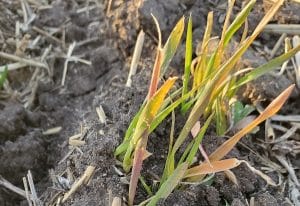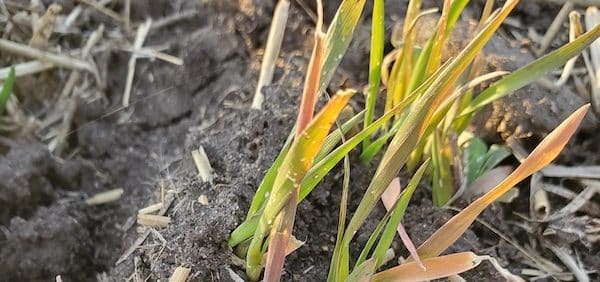How would you score your weed control? Check that weeds are dying as expected. Do you find healthy weeds that should have been controlled – based on the product applied and the timing? Was it a sprayer miss? Could the weeds have emerged after you sprayed? Are they possibly resistant to the product applied? Labs can test weeds for herbicide resistance.

How to make one spray count. If circumstances mean that a canola field will only get one herbicide spray before it grows beyond the label stage, make that spray count. Maximize herbicide efficacy by putting together an effective tank mix, choosing the higher herbicide application rate, and spraying under good conditions.
Does the crop really need that second pass? A second application of in-crop herbicide is not always economical if the crop is well established, competitive and ahead of the remaining weed population. A second in-crop spray only makes sense if…
Tempted to spray late? Stick to labels. Going off label with a late application is generally a bad idea for crop safety (which can reduce yields) and for potential pesticide residues in harvested seed. If using a tank mix, default to the most restrictive label when it comes to timing and crop staging. If one product has to be applied by the 6-leaf stage and another is the 7-leaf stage, then the mix has to be applied by the 6-leaf stage. Keep It Clean label message
How to diagnose herbicide carryover versus tank contamination issues. Crop injury due to carryover of herbicide from previous years will usually follow patterns related to topography and soil type. These are described here. Issues related to drift or tank contamination usually follow patterns related to wind (in the case of drift) and sprayer paths (as related to tank contamination). In this second scenario, contamination in the boom, for example, will tend to mean severe crop injury within the first few feet of application that quickly returns to more normal results. Contamination of a whole tank might cover many acres somewhat evenly, but then the next tank might be fine.
A good time for plant counts. With volunteers dying off after the spray application, this is a good time for final plant counts. You really don’t want to include volunteer canola plants in plant density counts or emergence calculations, so why not wait until after they’ve been sprayed out. How to do plant counts.

